Broadway Serenade

Brief Synopsis
Cast & Crew
Robert Z. Leonard
Jeanette Macdonald
Lew Ayres
Ian Hunter
Frank Morgan
Wally Vernon
Film Details
Technical Specs

Synopsis
Composer James Geoffrey Seymour is a strong supporter of his wife Mary Hale's singing career and appears with her on the vaudeville circuit. Consequently, when wealthy backer Larry Bryant persuades Broadway producer Cornelius Collier Jr. to put Mary in his show, Seymour and Hale split up as Mary reluctantly travels to Atlantic City with the show and Jimmy remains behind in New York. As Mary soars to stardom, Jimmy struggles with his musical compositions until one day, he reads a gossip column that claims that his wife is having an affair with Bryant. A drunken Jimmy confronts Mary with the accusation, and in the ugly argument that ensues, Mary asks for a divorce. On Christmas Eve, Jimmy is served with divorce papers and bitterly throws his compositions into the fire. When his friend Herman burns his hands while trying to rescue Jimmy's work, Jimmy realizes that the only respite from his misery lies in his composition and throws himself into his work until he finally sells an operetta. Throughout it all, Mary has never stopped loving Jimmy, but when he fails to contest the divorce, she agrees to marry Bryant. On the day that Mary is to sail to England to wed Bryant, Jimmy comes to her to renew their love, but she tells him that he is too late. However, when Collier refuses to produce Jimmy's show unless Mary will star in it, Mary agrees to remain in New York. On opening night, Bryant realizes that Mary still loves Jimmy and breaks their engagement, freeing Mary to return to Jimmy, her true love.

Director

Robert Z. Leonard
Cast

Jeanette Macdonald

Lew Ayres
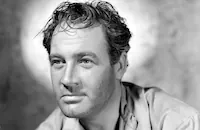
Ian Hunter
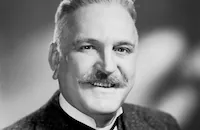
Frank Morgan
Wally Vernon

Rita Johnson

Virginia Grey

William Gargan

Katharine Alexander
Al Shean
Esther Dale
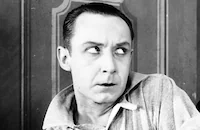
Franklin Pangborn

E. Allyn Warren
Paul Hurst
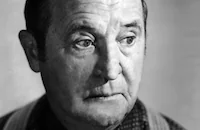
Frank Orth
Esther Howard
Leon Belasco
Kitty Mchugh
Kenneth Stevens
Ray Mayer
Edward Hearn
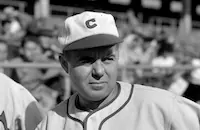
Ray Walker
Lawrence Wheat
William E. Lawrence
William Tannen
Morgan Wallace
Arthur "pop" Byron

Arthur Housman
Ted Oliver
Al Hill
Barbara Bedford
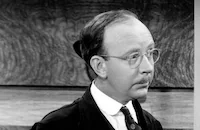
Hobart Cavanaugh
Jack Carlton
Mary Beth Hughes
Tom Hanlon
Hans Joby
Bernard Siegel
Estelle Etterre
Patricia West
Lionel Royce
Bert Moorhouse
Don Brodie
Jack Luden
Charles Sherlock
Allen Fox
Ernie Alexander
Jack Hutchinson
Olaf Hytten

Mary Maclaren
Claude King
Norman Willis
Jack Raymond
Bruce Mitchell
Paul Newlan
Sidney Jarvis
Jane Barnes
Gertrude Short
Marjorie Kane
Jill Dennett
Mary Gordon
Arthur O'bryan
J. D. Jewkes
Warren Lewis
Ken Darby's Octet
Six Hits And A Miss
Mary Kent
Kenneth Stevens
Helen Seamon
Roy Lester
Crew
Adrian
Leo Arnaud
Busby Berkeley
Jack Dawn
Walter Donaldson
Zaruhi Elmassian
Seymour Felix
John Taintor Foote
Chet Forrest
Cedric Gibbons
John Hoffman
Gus Kahn
Hans Kraly
Harold F. Kress
Charles Lederer
Robert Z. Leonard
Lew Lipton
Oliver T. Marsh
Merrill Pye
Leonid Raab
Sigmund Romberg
Douglas Shearer
Herbert Stothart
Herbert Stothart
Herbert Stothart
Marvin Stuart
Valles
Dorothy Ward
Edward Ward
Edward Ward
Edwin B. Willis
Bob Wright
Joseph Wright

Film Details
Technical Specs

Articles
Broadway Serenade
MacDonald and Ayres play singer Mary Hale and pianist/songwriter Jimmy Seymour, a married couple whose vaudeville act is broken up when she's spotted by Broadway "angel" Larry Bryant (Ian Hunter) and hired to appear in an upcoming revue. Mary quickly becomes a star, leaving her husband in a cloud of gloom and the show's former leading lady, Harriet Ingalls (Katharine Alexander), in the mood for revenge. After Harriet spreads the rumor that Mary and Larry are having an affair, the couple separates and Mary files for divorce. As time passes, Jimmy at last finds his own share of success -- but it may be too late for reconciliation because Mary is headed for the altar with Larry...
Frequently interrupting the melodramatic plot are musical performances by MacDonald ranging from pop songs and traditional tunes to excerpts from classical numbers. There's also comic relief from Frank Morgan (The Wizard of Oz (1939) himself) as the Broadway show's producer and vaudevillian Al Shean of "Mr. Gallagher and Mr. Shean" fame.
The score includes "Broadway Serenade for Every Lonely Heart" (adapted by Herbert Stothart, Edward Ward and Gus Kahn from Tchaikovsky's "None But the Lonely Heart"), "High Flyin'" and "One Look at You" (Stothart, Ward, Bob Wright, Chet Forrest), "Time Changes Everything" (Kahn, Walter Donaldson), Sigmund Romberg's "No Time to Argue," Victor Herbert's "Italian Street Song," "Musetta's Waltz" from Puccini's La Boheme and "Un Bel Di" from Puccini's Madame Butterfly.
Late in the production, MGM executives decided Broadway Serenade needed a stronger ending and brought in Busby Berkeley, noted for his lavish and kaleidoscopic musical numbers at Warner Bros., to stage a finale built around a reprise of "Broadway Serenade for Every Lonely Heart."
Berkeley later recalled, "I had the art director build me a huge set in varying elevations --all covered with black oilcloth. I wanted a hundred musicians and 30 male singers dressed in black frocks and wearing specially made Benda masks to represent all the great composers. Then there would be 20 female singers dressed in simple flowing black dresses..." The effect was completed with the studio orchestra in full dress banked on the opposite side of the screen, and MacDonald -- in an exquisite cape and gown -- standing on a 30-foot-high pedestal to sing her lyrics. The scene was spectacular enough to win Berkeley an MGM contract.
Ayres, a big-band pianist and guitarist before he became an actor, was right at home in the scenes in which Jimmy accompanies Mary at the piano. Ayres would later say of MacDonald that "She had more dignity with warmth, exuberance tempered with a sweet, calm control, graciousness unsullied by affectation than any other person I've ever known...above it all a most delightfully whimsical sense of humor." He was especially amused by an episode in which, after wincing at the "overwhelming volume" of her voice on the playback as she filmed her musical scenes, he was presented by his costar with a carton of earplugs.
One person unamused by MacDonald's performance in the film -- especially her rendition of the Madame Butterfly aria -- was rival soprano Grace Moore, who also had performed "Un Bel Di" in her Columbia film One Night of Love (1934). Like MacDonald, Moore had performed the aria on a setting with a Japanese bridge. In the MGM tradition, however, MacDonald's bridge was on a grand scale, larger and higher than anything Columbia's designers could have conceived. In a newspaper interview, alluding to MacDonald's interpretation of Puccini, Moore sniffed, "The height of the bridge does not determine the quality of the Butterfly."
Producer/Director: Robert Z. Leonard
Screenplay: Charles Lederer, from story by Lew Lipton, John Taintor Foote and Hanns Kraly
Cinematography: Oliver T. Marsh
Art Direction: Cedric Gibbons
Original Music: Walter Donaldson, Herbert Stothart, Edward Ward Editing: Harold F. Kress, W. Donn Hayes (uncredited)
Costume Design: Adrian, Valles
Cast: Jeanette MacDonald (Mary Hale), Lew Ayres (James Geoffrey "Jimmy" Seymour), Ian Hunter (Larry Bryant), Frank Morgan (Cornelius Collier, Jr.), Wally Vernon (Joey, the Jinx), Rita Johnson (Judith "Judy" Tyrrell), Virginia Grey (Pearl), William Gargan (Bill Foster), Katharine Alexander (Harriet Ingalls), Al Shean (Herman).
BW-109m.
by Roger Fristoe

Broadway Serenade
Virginia Grey (1917-2004)
She was was born in Los Angeles on March 22, 1917, and was exposed to the film industry at a very young age. Her father, Ray Grey, was a Keystone Cop and acted in several other of Mack Sennett's comedies with the likes of Mabel Normand, Dorothy Gish and Ben Turpin. When her father died when she was still a child, Virginia's mother encouraged her to join the acting game and audition for the role of Eva for Uncle Tom's Cabin, a big budget picture for Universal Studios in the day. She won the role, and acted in a few more pictures at the studio: The Michigan Kid and Heart to Heart (both 1928), before she decided to temporarily leave acting to finish her schooling.
She returned to films after graduating from high school, and after bouncing around Hollywood doing bits for various studios, she hooked up with MGM in 1938. Her roles in her first few films were fairly non-descript: In Test Pilot and Ladies in Distress (both 1938), she did little more than look pretty, but in the following year she had scene-stealing parts in The Women (upstaging Joan Crawford in a delicious scene as a wisecracking perfume counter girl) and as the suffering heroine in Another Thin Man (both 1939).
Despite her versatility (she could handle comedy or drama with equal effectiveness), MGM would cast her in some above-average, but hardly starmaking movies: Whistling in the Dark, The Big Store (both 1941), and Tarzan's New York Adventure (1942). She left MGM in 1943 and became a freelance actress for several studios, but her material as a leading lady throughout the '40s were mediocre: Swamp Fire, House of Horrors (both 1946), and Mexican Hayride (1948) were sadly the more interesting films in her post-MGM period. But by the '50s she was a well-established character actress, appearing in fairly big-budget pictures: All That Heaven Allows, The Rose Tattoo (both 1955), Jeanne Eagels (1957).
In the '60s, Grey turned to television and found work on a variety of hit shows: Wagon Train, Peter Gunn, Bonanza, My Three Sons, I Spy, and several others; plus she also captured a a couple of notable supporting parts in these films: Madame X (1966), and Airport (1970), before retiring completely from acting in the early '70s. She is survived by her sister, Lorraine Grey Heindorf, two nieces and two nephews.
by Michael T. Toole
Virginia Grey (1917-2004)
Quotes
Lambchop, do you remember that wonderful, romantic honeymoon we never had?- James
I remember it as though it were tomorrow.- Mary
Trivia
Busby Berkeley only directed the final musical number.
Notes
A news item in Hollywood Reporter notes that Walter Pidgeon and George Murphy were also considered for the male lead in this picture, and that Lew Ayres was eliminated from the cast and then later re-instated. This was Robert Z. Leonard's initial assignment as a producer-director for Metro. According to modern sources, this film marked Busby Berkeley's return to M-G-M.















